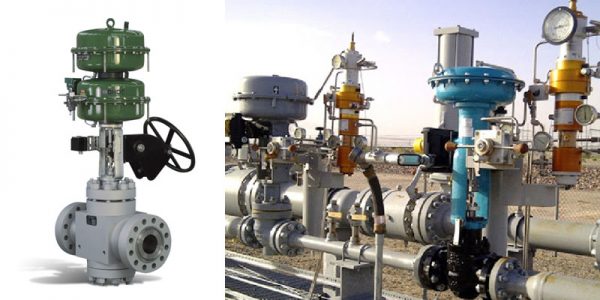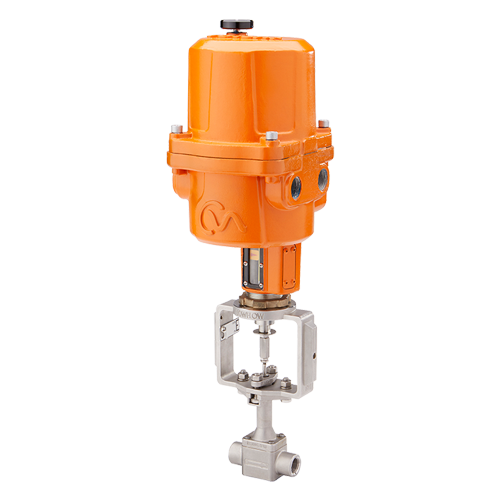Enhancing Operational Effectiveness with Advanced Control Valves
Enhancing Operational Effectiveness with Advanced Control Valves
Blog Article

Maximize Power Savings and Comfort With Advanced Structure Automation Controls
In the world of contemporary style and facility management, the combination of advanced building automation manages stands as a crucial improvement. By taking advantage of the power of automation, buildings can adapt, react, and progress in means that were when unimaginable.
Energy Efficiency Conveniences
Energy effectiveness advantages can substantially reduce energy usage and functional prices in buildings. By applying energy-efficient practices and technologies, building proprietors and operators can achieve considerable cost savings while additionally adding to ecological sustainability. Among the key advantages of boosting power efficiency in structures is the decrease of energy costs. Energy-efficient systems, such as innovative structure automation controls, can maximize making use of sources like illumination, home heating, and air conditioning, leading to lower energy expenses in time.
Furthermore, improved power effectiveness can prolong the lifespan of building equipment and systems. By running a lot more efficiently, HVAC systems, lighting components, and various other structure parts experience less deterioration, leading to minimized upkeep and substitute prices. Furthermore, energy-efficient buildings often regulate greater building values and rental rates, providing long-term monetary benefits to owners.
Additionally, power performance can boost passenger convenience and productivity. Effectively managed interior environments with optimal illumination and thermal problems develop an even more conducive and pleasurable work area, causing improved worker satisfaction and efficiency. On the whole, the power efficiency advantages related to sophisticated structure automation controls are complex, encompassing cost savings, environmental stewardship, and resident well-being.
Improved Comfort Control
Enhancing convenience control in building settings requires a sophisticated combination of advanced automation systems for optimum owner well-being. By using advanced structure automation controls, facilities can tailor the indoor setting to meet the details demands and choices of occupants. control valves.
Boosted comfort control goes past fundamental temperature changes. It includes functions such as tailored setups, occupancy sensors, and all-natural light utilization to develop a responsive and dynamic setting. By incorporating these sophisticated controls, structures can not only boost comfort yet also improve power effectiveness by maximizing system procedures based on actual tenancy and usage patterns. Eventually, focusing on occupant comfort with innovative automation systems leads to a more enjoyable and much healthier indoor atmosphere.
Operational Efficiency Improvements

Additionally, the implementation of real-time tracking and analytics tools makes it possible for building drivers to determine energy inefficiencies and functional anomalies immediately. By constantly monitoring energy use patterns and system performance metrics, changes can be made in real-time to maximize energy usage and guarantee peak operational efficiency. control valves. Furthermore, including demand feedback strategies right into building automation controls can additionally boost operational efficiency by dynamically changing power usage based on grid problems and pricing signals
Indoor Climate Optimization
Efficient interior environment optimization is a basic element of structure automation controls, guaranteeing passengers' convenience and well-being while maximizing energy cost savings. By making use of advanced sensing units and controls, developing automation systems can continuously keep track of and change temperature level, moisture degrees, air top quality, and air flow to develop an optimal interior setting. Keeping constant and comfy conditions not just improves owner complete satisfaction however likewise enhances performance and total wellness.
Indoor climate optimization also plays an important function in energy effectiveness. By fine-tuning air flow, cooling, and home heating systems based upon real-time data and occupancy patterns, constructing automation controls can considerably minimize energy consumption - control valves. Applying techniques such as demand-controlled ventilation and thermal zoning can aid lessen energy waste while making certain that each area of the structure gets the required conditioning.

Lasting Setting Creation
Building automation controls not only optimize interior environment conditions for power effectiveness sites and resident convenience but additionally lay the foundation for producing a sustainable setting through critical management of sources and systems. By incorporating advanced structure automation technologies, such as sensors, actuators, and smart software, facilities can readjust and keep track of power use in real-time to minimize waste and minimize their carbon impact. These systems enable anticipating upkeep, identifying potential problems prior to they escalate and optimizing devices efficiency to boost long life and efficiency.
Additionally, lasting setting production extends beyond power administration to include water preservation, waste decrease, and indoor air high quality enhancement. Building automation controls can control water usage, identify leaks, and guarantee appropriate waste disposal methods, adding to general sustainability efforts. Furthermore, by monitoring and controlling ventilation and filtration systems, these technologies enhance occupant health and productivity while reducing energy consumption connected with HVAC procedures.
Conclusion
In verdict, progressed building automation controls offer substantial advantages in terms of energy financial savings, convenience control, functional effectiveness, indoor environment optimization, and producing a sustainable atmosphere. By implementing these controls, structures can accomplish optimal efficiency while lowering energy usage and boosting passenger comfort. It is evident that using innovative automation innovation is important in enhancing structure performance and creating a much more sustainable future.
Power efficiency advantages can dramatically decrease power consumption and functional costs in structures. In general, the power efficiency advantages associated with sophisticated building automation controls are complex, encompassing expense savings, environmental stewardship, and owner wellness.
Additionally, integrating demand feedback approaches right into structure automation controls can additionally improve operational effectiveness by dynamically changing energy usage based on grid conditions and prices signals.
Structure automation manages not only enhance indoor environment problems for power effectiveness and passenger comfort but likewise lay the foundation for creating a sustainable setting via tactical administration of resources and systems.In conclusion, progressed structure automation regulates deal substantial benefits in terms of energy savings, comfort control, operational efficiency, interior environment optimization, and weblink producing a sustainable atmosphere.
Report this page